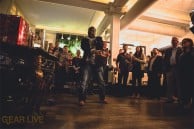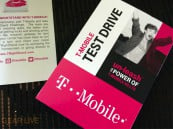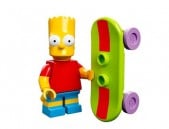Latest Gear Live Videos
Sunday February 15, 2009 8:12 pm
Q&A: Ryan Alexander-Tanner on the Xeric, Television and William Ayers

RYAN ALEXANDER-TANNER is a Xeric Award winner, indie cartoonist, and self-publisher (Television). Now one of his next projects is sure to set tongues wagging. It’s a graphic novel in collaboration with William Ayers called To Teach: The Graphic Memoir and scheduled to be published in 2010 by Teachers College Press.
TOM: Let’s talk about your Xeric Grant first. What did you have to submit to get it?
RYAN: In order to get one you have to submit a finished - or at least close to finished - comic book. I had everything done except the cover when I submitted Television #1. You also have to get a really solid budget proposal together, which a lot of people understandably have a hard time with. I got some help from my great friend Alex Cahill - an earlier recipient of the Xeric - and Gary Grinde over at Morgan Printing - who is a friend to indie comics artists across the nation - and it really wasn’t too bad. That’s one of the great things about indie comics; it really is a small world so it’s pretty easy to reach out to people if you need some help. I would recommend to anyone who was applying for one to contact previous recipients for some sage advice.
TOM: How did winning one make you feel?
RYAN: While I was waiting for the verdict to arrive in the mail I was having all of these anxiety dreams about receiving these giant envelopes full of shredded newspaper and cryptic messages. When the verdict finally arrived the first feeling I had was an enormous sense of relief! After that a strong feeling of accomplishment came over me, and a hopeful optimism for the future. The Xeric Foundation really does provide an amazing starting point for aspiring cartoonists.
TOM: I’ve read the rules and there are limits to what you can do with the grant money. Did you put it to good use?
RYAN: Of course I did! I had all these plans not to, but you have to send in receipts or order forms to get your scrilla, so no matter how hard you try you can’t just cash out your grant and waste it on an 8-day bender in Xuahaca. Some of my friends still won’t speak to me over my unfulfilled promises of the Spring Break 2008 that could have been…
TOM: Is there a physical award that goes with it, like a medal or a giant check you can frame or something for the mantel?
RYAN: I wish! You get a nice cover letter and a bunch of free money, but no bells and whistles. It’s not actually an award, but a grant. You are awarded the grant, so I think it’s often referred to as the Xeric Award.
TOM: What did you think of the whole self-publishing process, and what did you learn from it?
RYAN: I think it’s really great in a lot of ways. The fact that you can make something entirely by yourself and distribute it internationally is amazing.
TOM: What surprised you about publishing your own comic?
RYAN: I’m really not a great fan of all the legwork it takes to get a book on the shelves. If there’s an aspect of comics I can’t really put my heart into, it’s self-promotion and printing. As such, it’s pretty hard for me to push a project. I like to concentrate on writing and drawing and not think too much about paper stock and marketing and all that.
TOM: Would you do it all again?
RYAN: It sounds kind of crappy but I think one of the main things I learned from self-publishing is that I’d rather not.
TOM: How many copies of Television #1 did you sell?
RYAN: All things considered, it did alright. I’ve still got a few copies in my attic if you’d like to buy some.
TOM: How did you land To Teach: The Graphic Memoir project?
RYAN: That’s quite a story. I first came in contact with Bill (Ayers) when I interviewed him for a High School history project in the ‘90’s. I made a comics documentary about his Weather Underground experience, which I didn’t know at the time would be the start of a lifelong interest in adapting interviews into comics narratives.
TOM: How did you find him?
RYAN: I was able to get in touch with him because his brother, Rick, was my English teacher at the time. I met Bill in person for the first time in 2001 while he was in Portland on a book tour promoting Fugitive Days. At the time his niece, Sonia, and I were college roommates and Bill stayed with us and took us out for fried chicken.
TOM: And you stayed in touch?
RYAN: Last year I got an e-mail from Bill out of the blue about how Teachers College Press wanted to do a comics edition of To Teach. I’ve heard several versions of how that came about but I’ll tell you the one that I like the best: The Press was on Bill’s case to do a third edition of To Teach on account of it was one of their best-sellers. Having written it 15 or so years ago, he was pretty uninterested in coming back to it, and so in effort to dissuade the conversation further he declared, “I’ll only do it if it’s a comic book!” About a week later the Press let him know that they’d discussed it and ultimately loved the idea.
TOM: And Bill knew you were a cartoonist.
RYAN: Since I was the only comics artist he’d ever met, Bill thought of me for the project. That’s not to say that they just handed it to me. The proposal process was pretty heavy-duty, and our editor, Meg Lemke (who I’m sure is mad at me now for telling this version of how the book came about), was no stranger to comics and already had a list of artists she wanted for it. Fortunately for me, I had a history doing comics journalism for a newspaper in Oregon and I’d recently gotten the Xeric, so I had some semblance of credibility there and they let me take a shot at it.
TOM: How did you put together your proposal?
RYAN: Bill and I got together and roughed out the first chapter and the editorial team and peer reviewers really liked what we did with it. Then there was a lot of logistical planning and budget stuff and yadda yadda yadda and then I signed the contract.
TOM: Can you give us the publishing details?.
RYAN: It’s due for release in Spring 2010 (fingers crossed). It will be 144 pages in 6x9 format, softcover. The cover will be in color and the interiors will be in black and white. I’m also doing a new cover for the latest edition of the text edition of To Teach, which should be out around the same time.
TOM: How did you and Ayers work together? Was there a script? Did you work via phone or email?
RYAN: Adapting To Teach into a comic book was really quite a process. The original text isn’t a story at all, it’s more a comprehensive collection of ideas and ideals. Going into it, Bill thought he would just hand me the original book and I’d turn it into a comic. If it were a traditional story, I’m sure I could have done just that, but finding ways to present ideas that aren’t my own was a whole other story. We first started putting the proposal stuff together through e-mails and it really wasn’t working out efficiency-wise. I realized that if we were going to do this right we needed a constant back-and-forth dialogue in order for each of us to completely understand what the other was trying to do and take it as far as it could go. I ended up going out to Chicago and staying with Bill for a few days while we finalized the proposal pages. During those few days he let me know that I could come and stay with him while we wrote the rest of the book. Initially I thought it was kind of a crazy idea because we barely knew each other. However, if you hung out with Bill for a few days you’d get a sense that living and working with him for a period of time would be pretty rad, too. I didn’t know at the time that this work period would be during all the (2008) election hullabaloo, but that’s a whole other story…
So we lived together between August and December and worked on the book all the time. We got a pretty good process down: I would do some concept art for each chapter and we would each write an outline of what we thought the key points were. I would composite those and make him an outline of where those points were going and how much space we had for each. He would do long free-writes and we’d try to combine them with what we had and put it all together into a cohesive narrative.
TOM: Did he have much input into the art?
RYAN: We spent a lot of time just sitting at a table and hacking stuff out. Often times discussions would go into tangents; some of these were us goofing off, but others resulted in major elements of the book. A lot of times he would make visual suggestions and I ended up writing a lot of the text, so it was a collaboration in the truest sense. So it was a long, organic process. We turned our final script in mid-December, which was really rough drawings and all the text. I think it was our 3rd draft. It just came back from editing and needs a little sexing up, so I think Bill and I have a few more sit-downs to do before we’re done.
TOM: What kind of tools did you use to create your drawings?
RYAN: Old school all the way! Every single thing you see on the page will have come out of my hand. Pencils, inks, lettering, everything. I’m a real traditionalist when it comes to making comics. That being said, I do all my digital print preparation myself, and there’s a bit of clean-up and patching together in that stage. But it’s all hand drawn!
TOM: To say that William Ayers is a magnet for volatile criticism is an understatement. Even though this isn’t a political book, do you think some of that will come your way?
RYAN: Oh, who knows. Probably. They just announced the book this week and there’s already a bunch of right-wing blogs calling it “disgusting” and stuff like that. I wish people that weren’t angry about the book would give it that much attention. I actually have my own history of getting in trouble with my work so it doesn’t feel like anything too new. People love to get riled up, especially when they don’t know the whole story. Sometimes it keeps me up at night but in the end I know it’s a bunch of nonsense. I wouldn’t say that (To Teach) is not a political book, though. One thing I learned over the course of making this book is that educating is fundamentally political. Another thing I’d like to say is that, while there is no reaction whatsoever in our book to any of the smear campaigns that went on, I do feel like I’m being given a wonderful opportunity to represent Bill in a way that actually reflects his character.
TOM: What was it like collaborating with another person vs. doing your own comics? Was it a difficult adjustment?
RYAN: Not at all. I actually have a history of collaboration in my comics work, so it was nothing new for me. Most of my collaborators have been experienced writers who are new to comics and that’s always a little tricky. Comics writers just give you a script and then you draw it. Maybe there’s a few e-mails or phone chats, but it’s all pretty straightforward. Other writers are a whole different story. I like the fresh perspective they bring and the standards of language and information they have but what gets complicated is that, when you try to describe a page or a sequence to them, they just aren’t going to “see” the visual you’re describing. With Bill, as well as any other people I’ve worked with at newspapers or businesses or wherever, I had to draw everything out in order to show them what I was trying to do. That has its own advantages, too, because having to draw things out a lot helps you develop a stronger sense of the page and how it’s looking and all that.
TOM: From the stuff I’ve read about it so far, it sounded like the artwork was already done.
RYAN: Oh, if only that were true! It’s written but not yet drawn. The book is due in October to be released in the Spring, and I will be working hard every day between now and then!
TOM: The indie comics scene is evolving at a rapid pace as newspapers collapse and alternative weeklies cut back and Diamond Comics raises their minimum requirements for distribution. Where do you see your comics career going?
RYAN: It’s funny that you’d mention the indie scene and Diamond at the same time because it draws attention to the fact that there really is no indie scene. The distribution profits for Superman and Love & Rockets are all going to the same place. I’m hoping guys like Tony Shenton are able to successfully create the legitimate indie market they’re working towards so we’re not all going around fooling ourselves. I also think that floppy comics are going out of style and we’re going to see more and more happening in the trades market. I hope that there will always be floppy comics because I love that format, but direct trade sales to bookstores is where I think the big money’s at in the future. Like I said with the self-publishing thing, I’d really prefer to just make the work and not have to worry so much about marketing and demographics and all that. I do have a genuine interest in making the types of comics you might find outside of the comics store, like comics you’d see in a High School history book or in a trade manual, so I think I’ll be okay. It’s really strange to watch this market change so rapidly. I suppose I’ll end up wherever I have to in order to keep making comics because I’m in it for life, man. No choice.
TOM: What’s your next project after To Teach?
RYAN: What a terrifying question! I don’t know yet, but I’ll be working on To Teach for some time still before I need to figure it out. I’ve been chipping away at Television #2 - the first story for it is completed - but it’s really hard to make time for a project that I’m going to lose money on, especially when I am so busy and poor and nobodies waiting for it. Things tend to pop up out of nowhere. I’ve done some pretty random stuff. Last year I did a comic for Intel and one for Portland’s Roller Derby team. There’s a non-fiction book that I’ve always wanted to illustrate so I might try to pursue that… I’m actually thinking of going to Grad School. As cornball as it sounds, I’m thinking a lot about becoming a teacher. Part of why I seemed like a good pick for this project is because I’d been working as an after-school teacher, teaching elementary school kids how to draw comics for a few years before this project came up. So I guess you and I will both just have to wait and see. Just make sure that you and all your readers buy up everything I’m making so you don’t miss anything!
That sounds like a plan. Thanks, Ryan and good luck with the new book. And maybe some Xeric aspirants will be contacting you for advice!
(Illustration © Ryan Alexander-Tanner)
INTERVIEWS with other indie cartoonists:
ZACH WEINER - on SATURDAY MORNING BREAKFAST CEREAL
NORM FEUTI on GILL and RETAIL
DAN THOMPSON - on RIP HAYWIRE
Advertisement
Advertisement
Advertisement
© Gear Live Media, LLC. 2007 – User-posted content, unless source is quoted, is licensed under a Creative Commons Public Domain License. Gear Live graphics, logos, designs, page headers, button icons, videos, articles, blogs, forums, scripts and other service names are the trademarks of Gear Live Inc.












Comments: